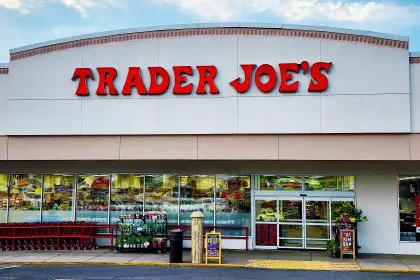Newark’s bustling streets and transit hubs pulse with energy, but for many residents, the daily commute in 2025 is a grueling test of patience. From congested highways to unreliable trains, the city’s transportation challenges turn routine trips into nerve-racking ordeals. These seven commutes, numbered for clarity, highlight the stark realities of navigating Newark, revealing how gridlock, delays, and infrastructure woes strain the city’s vibrant spirit and leave commuters yearning for smoother journeys.
1. Route 21 gridlock to Downtown
Route 21, a major artery into Downtown Newark, transforms into a parking lot during morning rush hours. Cars crawl bumper-to-bumper from McCarter Highway’s northern stretches toward Penn Station, with traffic lights and merging lanes creating bottlenecks. Construction projects, often extending months longer than planned, narrow the road to a single lane at key points. Drivers face delays of up to 45 minutes for a trip that should take 15, with horns blaring and tempers flaring. The route’s congestion disrupts schedules for those heading to offices or early appointments, making it a daily source of frustration.
2. NJ Transit delays from Ironbound
The Ironbound’s vibrant community relies on NJ Transit trains for commutes to jobs across the region, but chronic delays plague the Morris & Essex Line. Platforms at Newark Penn Station brim with commuters waiting for trains that arrive late or are canceled without warning. Signal failures and aging tracks often halt service, leaving riders stranded for 30 minutes or more. The packed cars, when they do arrive, offer little relief, with standing-room-only conditions during peak hours. For Ironbound residents, these disruptions turn a short ride into a stressful gamble, eroding trust in public transit.
3. Raymond Boulevard bus crawl
Raymond Boulevard’s bus routes, connecting Newark’s core to its outer neighborhoods, suffer from agonizingly slow service. NJ Transit and private buses inch along the corridor, caught in traffic snarls worsened by delivery trucks and double-parked cars. Stops near Broad Street are particularly chaotic, with overcrowded shelters and buses skipping passengers due to capacity limits. A trip from the West Ward to Downtown, just a few miles, can take over an hour during rush periods. Commuters endure cramped conditions and unpredictable schedules, making this route a daily test of endurance.
4. I-78 congestion to Port Newark
Interstate 78, linking Newark to its bustling port and industrial zones, is a nightmare for commuters heading to Port Newark. Heavy truck traffic, especially in the early morning, clogs the highway’s narrow lanes, with frequent merges causing near-standstills. Potholes and uneven pavement jolt drivers, while poorly timed traffic signals at exits like Frelinghuysen Avenue add to the chaos. A 10-mile trip can stretch to 50 minutes, draining time and energy from workers in logistics and warehousing. The relentless gridlock on I-78 underscores Newark’s struggle to balance commerce with commuter needs.5. PATH train overcrowding to Journal Square
The PATH train from Newark Penn Station to Journal Square in Jersey City is a lifeline for cross-state commuters, but overcrowding makes it a grueling experience. Morning trains fill to capacity within minutes, leaving passengers pressed against doors or unable to board. Delays from track maintenance or mechanical issues are common, with waits of 20 minutes or more during peak times. The humid, packed cars amplify discomfort, and platform congestion at Newark’s station adds to the stress. For those relying on this route, the daily crush erodes the promise of a quick, efficient commute.
6. Springfield Avenue traffic to South Ward
Springfield Avenue, a vital corridor through Newark’s South Ward, grinds to a halt during evening rush hours. Commuters heading home from Downtown face endless red lights and aggressive drivers weaving through tight lanes. Pedestrian crossings and school zones slow traffic further, while poorly maintained roads riddled with potholes force cautious driving. A trip from Broad Street to South Orange Avenue, barely three miles, can take 40 minutes. The avenue’s congestion frays nerves, leaving South Ward residents dreading their evening return and longing for smoother streets.
7. Ferry Street pedestrian hazards
Ferry Street in the Ironbound, a pedestrian-heavy route to local shops and transit hubs, poses its own commute challenges. Narrow sidewalks and heavy foot traffic create bottlenecks, especially near Wilson Avenue, where commuters dodge overflowing trash bins and uneven pavement. Cyclists weaving through crowds add to the chaos, and poorly marked crosswalks make crossing the busy street a risky endeavor. For residents walking to bus stops or train stations, the journey feels like an obstacle course, with delays and safety concerns turning a short stroll into a daily hassle.
Why these commutes matter
These seven commutes reveal the stark challenges of navigating Newark in 2025, where infrastructure struggles to keep pace with the city’s growth. Route 21’s gridlock and Springfield Avenue’s congestion sap time and energy from drivers, while NJ Transit and PATH delays test the patience of public transit users. Raymond Boulevard’s sluggish buses and I-78’s truck-heavy traffic highlight the city’s overburdened roads, and Ferry Street’s pedestrian hazards disrupt even the simplest journeys. Each commute, though distinct, contributes to a broader sense of frustration, undermining Newark’s reputation as a connected urban hub.
The broader impact
Newark’s commute woes extend beyond individual delays, affecting the city’s economic and social fabric. Chronic gridlock on routes like I-78 and Route 21 slows commerce, delaying deliveries and impacting port operations. Public transit failures, from NJ Transit’s delays to PATH’s overcrowding, discourage reliance on sustainable options, pushing more cars onto already clogged roads. Springfield Avenue’s traffic and Ferry Street’s hazards strain neighborhood cohesion, as residents feel isolated from the city’s core. These issues erode quality of life, making daily routines a source of stress rather than a seamless part of Newark’s vibrant rhythm.
A city in need of solutions
Newark’s seven tough commutes in 2025 paint a picture of a city at a crossroads, grappling with the demands of growth and aging infrastructure. From the gridlocked lanes of Route 21 to the crowded platforms of PATH, these journeys test the resilience of residents who navigate them daily. Efforts to improve, like road repairs or transit upgrades, are underway but fall short of easing the strain. These commutes, stark and relentless, call for bold action to restore Newark’s flow, ensuring its streets and stations support the city’s dynamic spirit rather than fraying its nerves.













